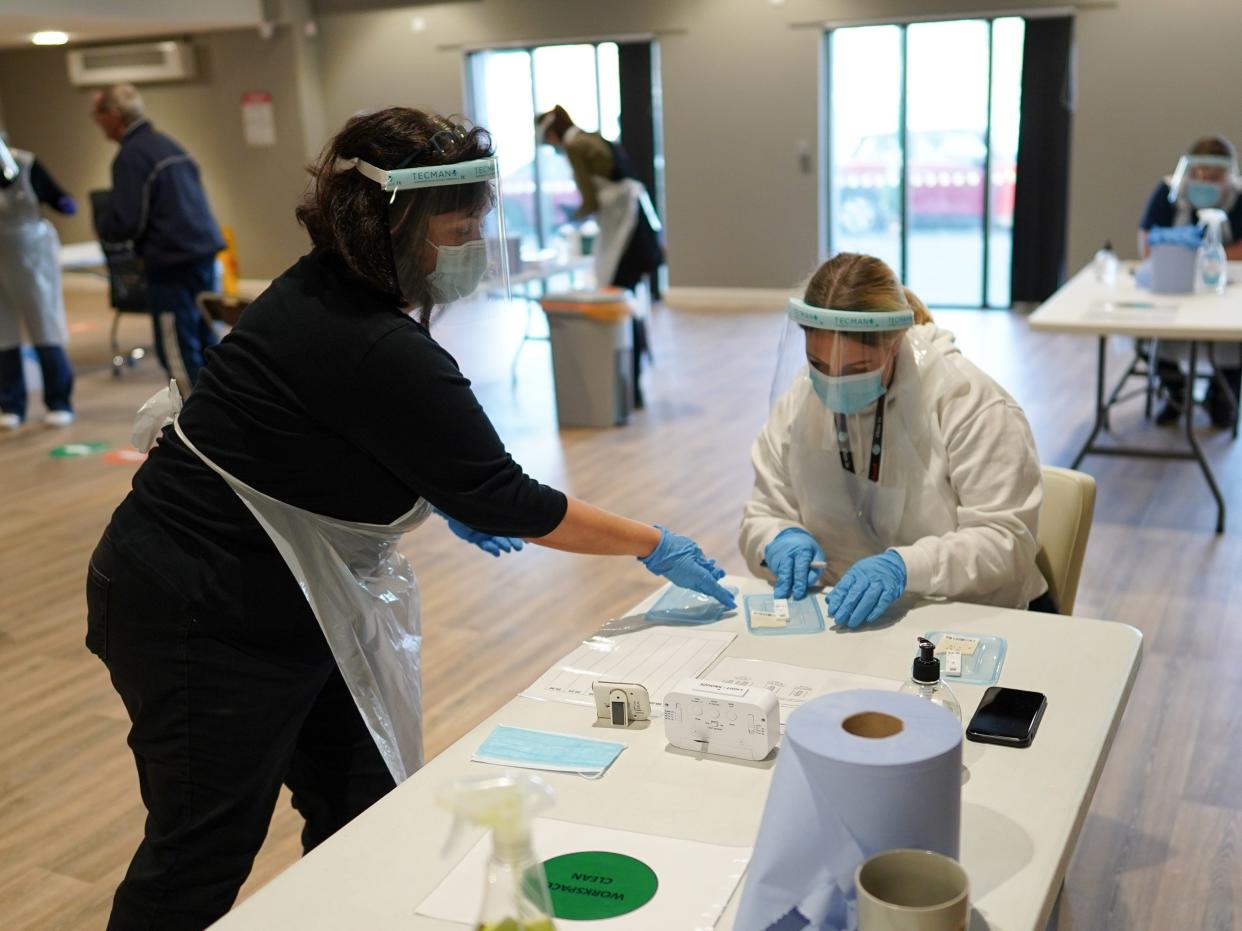Care homes ‘failed’ by lateral flow test rollout, study finds

Care homes in England are being “failed” by the rollout of rapid lateral flow covid tests, a study author has warned after finding the pilot scheme had little to no impact on the scale of outbreaks in care settings.
Findings published in a pre-print paper found the majority of staff in 11 Liverpool care homes took less than a third of the rapid result tests required over a six week period between December and January.
The research, undertaken by the universities of Liverpool, Nottingham and Imperial College London, found no significant difference in the proportion of care homes with outbreaks or the size of outbreaks when comparing the results with homes that were not participating in the pilot.
They added that reasons behind the lack of consistency uptake included the “excessive” work burden of care workers, the need to return to workplaces outside of employment hours to get a test, the implication of a positive test on finances and workloads, and concerns over accuracy.
It comes as The Guardian reports senior officials have raised “urgent concerns” in government over false positives from the lateral flow tests, which were rolled out for use by the general public last week.
The study authors warned use of the tests will not prevent outbreaks and the associated pressures on staff could lead to increased turnover and burnout if areas of concern for care workers are not addressed.
Lateral flow tests do not need laboratory assessment and can give results in fewer than 30 minutes, with experts saying they are effective at finding people who are most infectious and most likely to transmit the virus to others.
Currently care home staff in England are required to take two LFD tests and one lab-assessed PCR test a week. As part of the pilot, staff were required to take twice weekly Innova LFD tests at their workplace.
Despite an initial “eagerness to participate”, just 8.6 per cent of staff took and logged more than 75 per cent of the required tests, and around a quarter took and logged more than half of the tests.
Coronavirus outbreaks were identified in six of the homes within 10 days of the study period - in only one was a positive LFD result identified beforehand.
The authors say there is a “disconnect” between the prescribed testing regime and its real-life context, which “risks an increase in staff dissatisfaction and its attendant potential for increased staff turnover and burnout” if not addressed.
They write: “Without addressing the contextual and human factors that lead to poor adherence of testing protocols, these testing regimes will not have the opportunity to perform at the required level to prevent outbreaks in care homes.”
Dr Peter Buckle, principal research fellow at Imperial College London and study author, said the LFD rollout appears to have taken place without being “fully thought through” or with enough consultation with care homes.
He told the PA: “This, to us, has not only failed the care homes, but probably created some long-term trust issues, I would have thought… between care homes generally and what’s being advocated centrally, because it clearly has caused them a lot of concerns and worries and hasn’t protected them in the way that they might have believed it would.”
Prof Buckle warned against “misplaced confidence” in the testing system, adding that he has no reason to think the pilot findings are not reflected elsewhere.
He said there is a window of opportunity of several months to learn from care homes about what is working and make sure an effective testing system is in place before any third wave.
He added: “I think the need to carry on having very robust testing is going to be with us for a very long time.
“And I think we have a duty of care to make sure that that testing is optimum.
“Our research suggests that there are lots of problems with the existing testing system that need to be resolved quickly.”
Liz Jones, policy director at the National Care Forum, said the research highlights “really key points” for the shaping of longer-term surveillance measures in care homes.
She said: “It illustrates the reality of the current testing regime in terms of time, complexity and cost, as well as the challenges of making it work with variable shift patterns, staff rotas, training and space to conduct testing.
“It also recognises the ‘opportunity cost’ of the current design of the testing regime - so the time used on testing cannot be devoted to care.”
A Department of Health and Social Care spokesperson said: “Around one in three people do not show any symptoms of infection and, as we navigate the road map out of the pandemic, rapid lateral flow devices and PCR tests are vital weapons in our arsenal, detecting under the radar cases and helping to keep our most vulnerable safe.]
“The testing regime for care home staff uses both LFD and PCR, which combines the rapid results of LFD testing, with the higher sensitivity of PCR tests.
“We remain committed to the use of these rapid lateral flow devices in care homes, and we are in touch with care homes with lower-take up rates to provide additional support.”
Additional reporting by PA
Read More
UK Covid-19 vaccinations: Latest figures
‘Black manifesto must be included in London mayoral race’
Civil servant in Greensill row ‘breached rules’ over trustee role

